
The transmission elephant in the room
Why clean local energy is more cost-effective than large-scale, remote generation.
Most Americans want to save money, and most Americans want the US to deploy more renewable energy. What most Americans don’t realize is that we can do both – by generating more of that energy close to home.
The traditional thinking is that economies of scale make large, remote power plants more economically viable. But a new study by Vibrant Clean Energy shows that’s very far from being the case.
Two key findings came out of the study:
- If we deployed enough large solar and wind farms to decrease CO2 emissions by 95% by 2050, Americans would pay $385 billion more for power over the next 30 years.
- If we scale up local solar+storage in addition to and in coordination with utility-scale renewables, we can achieve the same clean-energy goals while saving $473 billion.
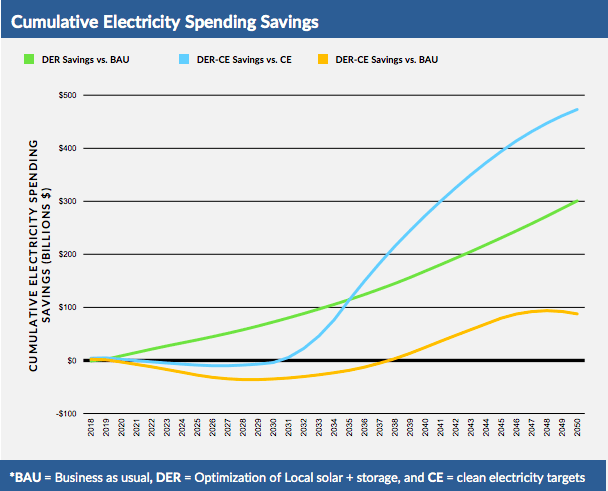
Economies-of-scale thinking ignores transmission costs
These results may seem surprising on first glance. Shouldn’t economies of scale make large-scale power generation cheaper?
But this way of thinking ignores the fact that remote energy generation results in booming, though often invisible, transmission costs.

Large-scale, remote energy generation looks cheaper when we don’t account for the “shipping and handling” costs of moving the energy from where it’s generated to where it’s used. These costs are generally invisible to both ratepayers and the entities procuring the energy – community choice aggregators (CCAs) and investor-owned utilities (IOUs). But they’re the fastest-growing part of electricity bills; in many areas, it may soon cost more to transmit energy than to generate it.
California is a case in point. Currently, most of the state’s ratepayers are charged Transmission Access Charges whether or not the energy they use travels across the transmission system. But the CCAs and IOUs ignore the transmission costs when they buy energy, since those costs are passed on to ratepayers.
As a result, the CCAs and IOUs often end up buying energy from distant sources – energy that requires billions of dollars of inefficient transmission lines to reach customers. The more remotely generated energy is bought, the more transmission infrastructure has to be built to deliver it, needlessly driving up California’s energy bills. And fewer clean local energy projects get built.
Unlike remotely generated electricity, locally generated electricity does not require a massive transmission network to move electricity from source to customer. When this major advantage is priced into the total cost of energy, clean local energy is much more competitive – and actually less expensive in many cases:
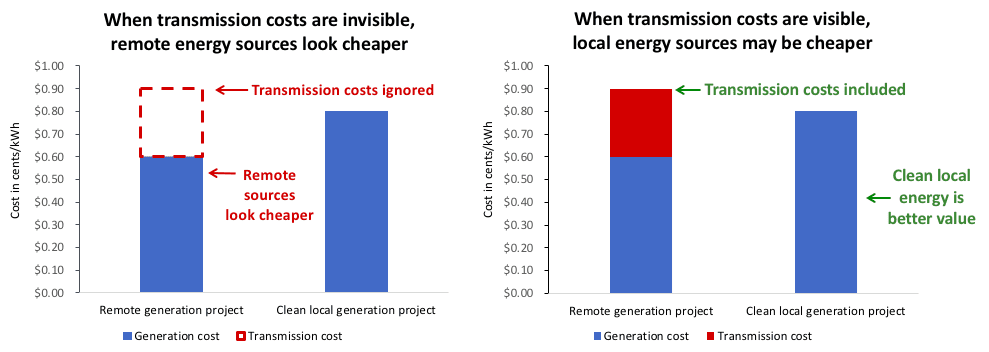
A holistic view of transmission and distribution
While transmission is a significant piece of the puzzle, it does not exist in a vacuum. The Vibrant Clean Energy study looked at much more than just transmission costs; their sophisticated modeling tool, WIS:dom, sought the best value that accounted for transmission, distribution, and generation in one platform. The model used many more data points than traditional models – including granular location planning, temporal granularity down to 5-minute increments, local policy preferences, and much more.
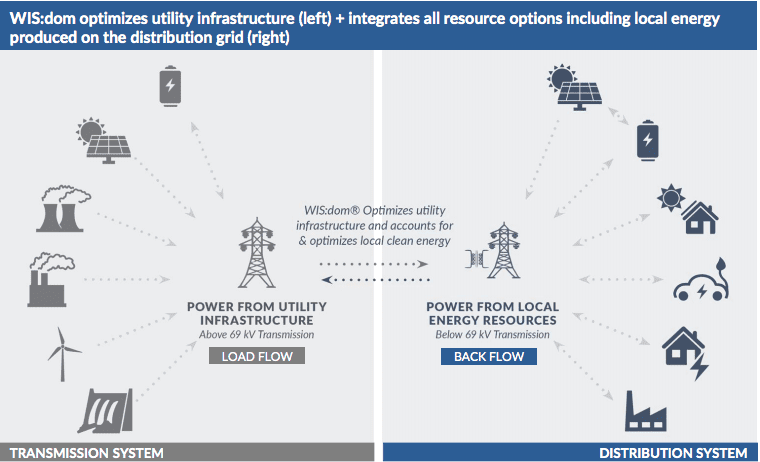
A key finding using this model was that local generation can lessen the need for both distribution and transmission infrastructure. Local solar+storage, because it can be deployed at peak times, reduces net electricity demand and smooths peaks in demand, easing stress on the system. Deploying more local solar+storage can obviate the need for some distribution infrastructure, as well as additional utility-scale generation and its associated transmission buildout. This means less large-scale, remote generation and less money spent on expensive peaker plants.
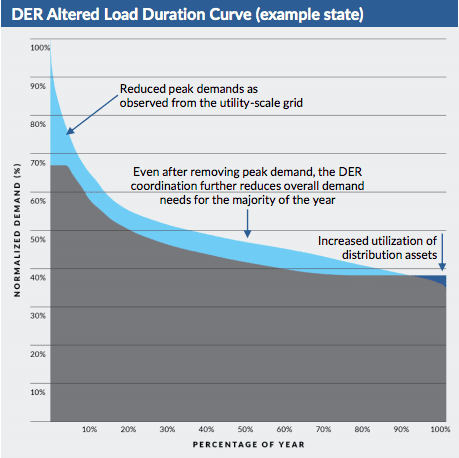
Economic, environmental, and resilience benefits of local solar+storage
Local solar+storage brings unparalleled economic, environmental, and resilience benefits to communities that remote generation simply can’t provide.
Jobs and other economic stimulation. On a per MW basis, local solar creates more jobs than remote energy generation – local jobs that can’t be outsourced. In the WIS:dom model, integrating, optimizing, and growing local solar+storage – in combination with clean-energy targets – resulted in over 2 million direct and indirect jobs by 2050. This doesn’t include “induced” jobs and other economic boosts to communities created by the ripple effect of the direct and indirect jobs.
In an illustration of how this looks at the local level, the Clean Coalition conducted an economic analysis of adding solar+storage in the Goleta Load Pocket, a disaster-prone, transmission-vulnerable 70-mile stretch of Southern California coastline. The analysis shows significant benefits to the area over 20 years from adding scalable blocks of 10 megawatts (MW) of solar, 20 megawatt-hours (MWh) of energy storage, or – the most cost-effective and resilient solution – a combination of solar+storage.
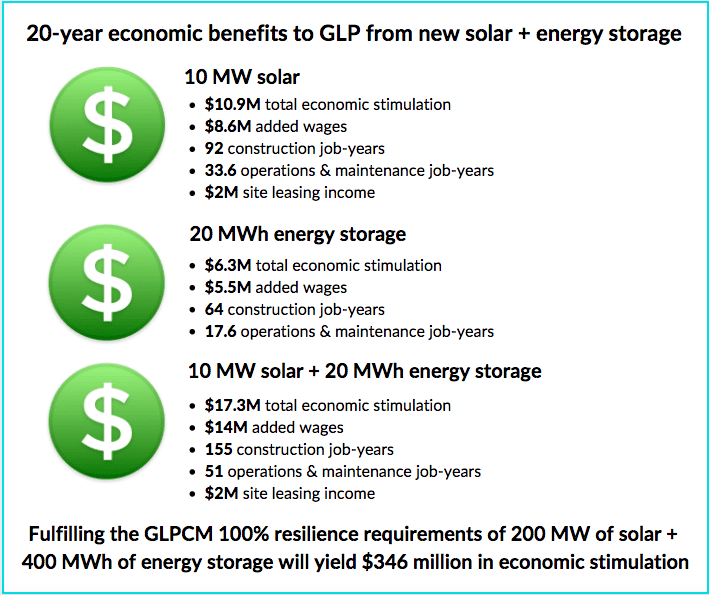
Environmental benefits. Long transmission lines produce significant emissions from electricity loss and can also harm pristine environments. And that’s just part of the picture. While remote solar and wind generation obviously provide important environmental benefits, local solar+storage brings these benefits more directly to our communities.
Unlike remote solar farms, local solar+storage can replace dirty gas peaker plants in our communities. Currently, we rely too much on these plants to meet infrequent peaks in electricity demand. Peaker plants are expensive and inefficient to run, emit high rates of pollutants, and are disproportionately located in disadvantaged communities, subjecting already vulnerable populations to health and environmental hazards.
Resilience. Long transmission lines are inherently not resilient, as has become increasingly apparent in the face of extended and more severe wildfire and hurricane seasons, as well as planned power shutoffs. On the other hand, local solar+storage, especially when deployed as part of a microgrid, provides significant resilience benefits.
Everyone understands that these resilience benefits are extremely valuable, but until recently no one had been able to quantify this value. In 2020, the Clean Coalition refined our value-of-resilience methodology, VOR123, based on tiering electrical loads into three tiers – critical, priority, and discretionary. We determined that resilience is typically worth a 25% adder to a facility’s electric bill. When we put this methodology to the test on Solar Microgrids for the Santa Barbara Unified School District, we found that the District will receive millions in resilience benefits for free.
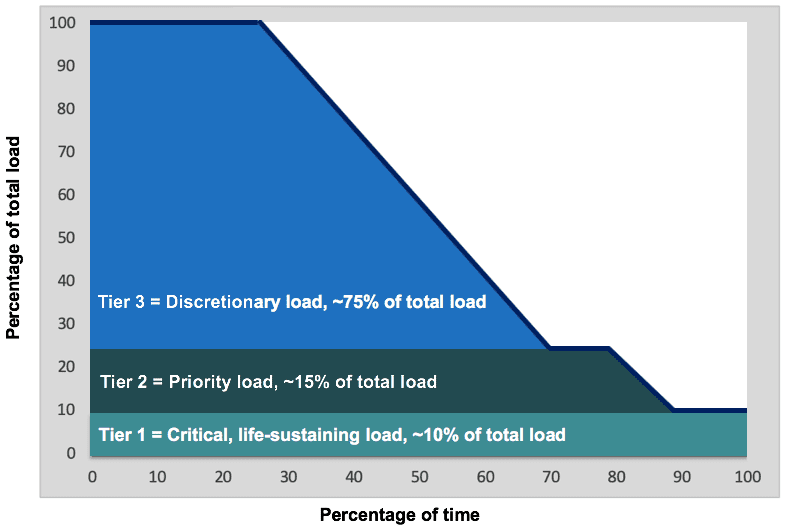
We need the transmission system, but we don’t need to keep expanding it
As the Vibrant Clean Energy study makes clear, we need some remote energy generation – and the transmission lines to move that energy from where it’s generated to where it’s used. In the WIS:dom model, utility-scale solar and wind account for over 50% of the country’s capacity and generation needs.
But we also need to get beyond thinking that large, remote power plants are the most cost-effective solution.
To achieve maximum benefits, remote and local generation must work in concert. Local solar+storage not only saves on transmission costs; it also decreases net demand and smooths overall demand, enabling access to the lowest-cost utility-scale generation.
Adding more transmission, on the other hand, incurs huge costs and mainly benefits the monopoly utilities, who earn a guaranteed rate of return on infrastructure investments – incentivizing them to build more transmission infrastructure.
It’s time to put the interests of customers before those of utilities. Local solar+storage should be a key part of energy planning throughout the US.

